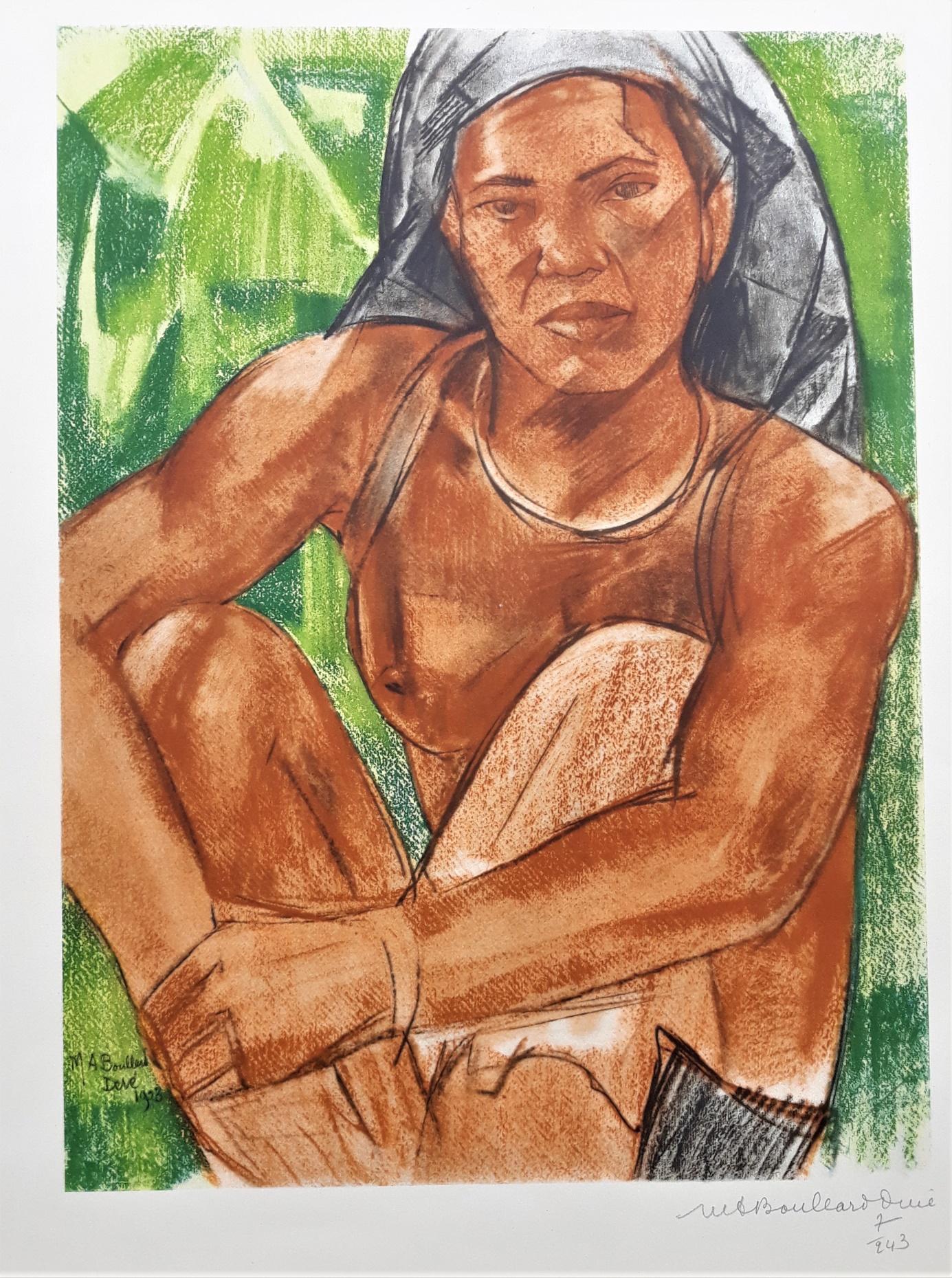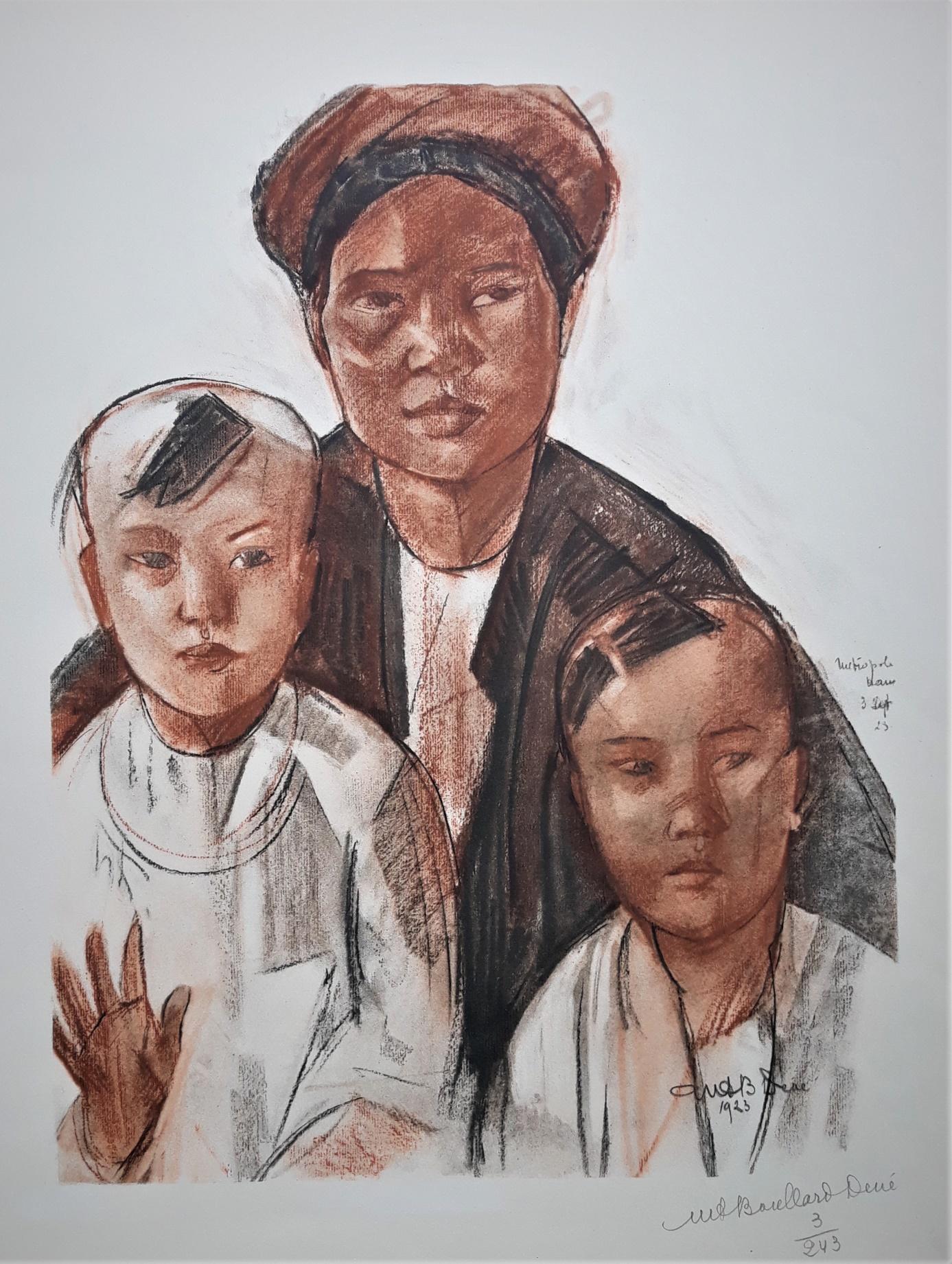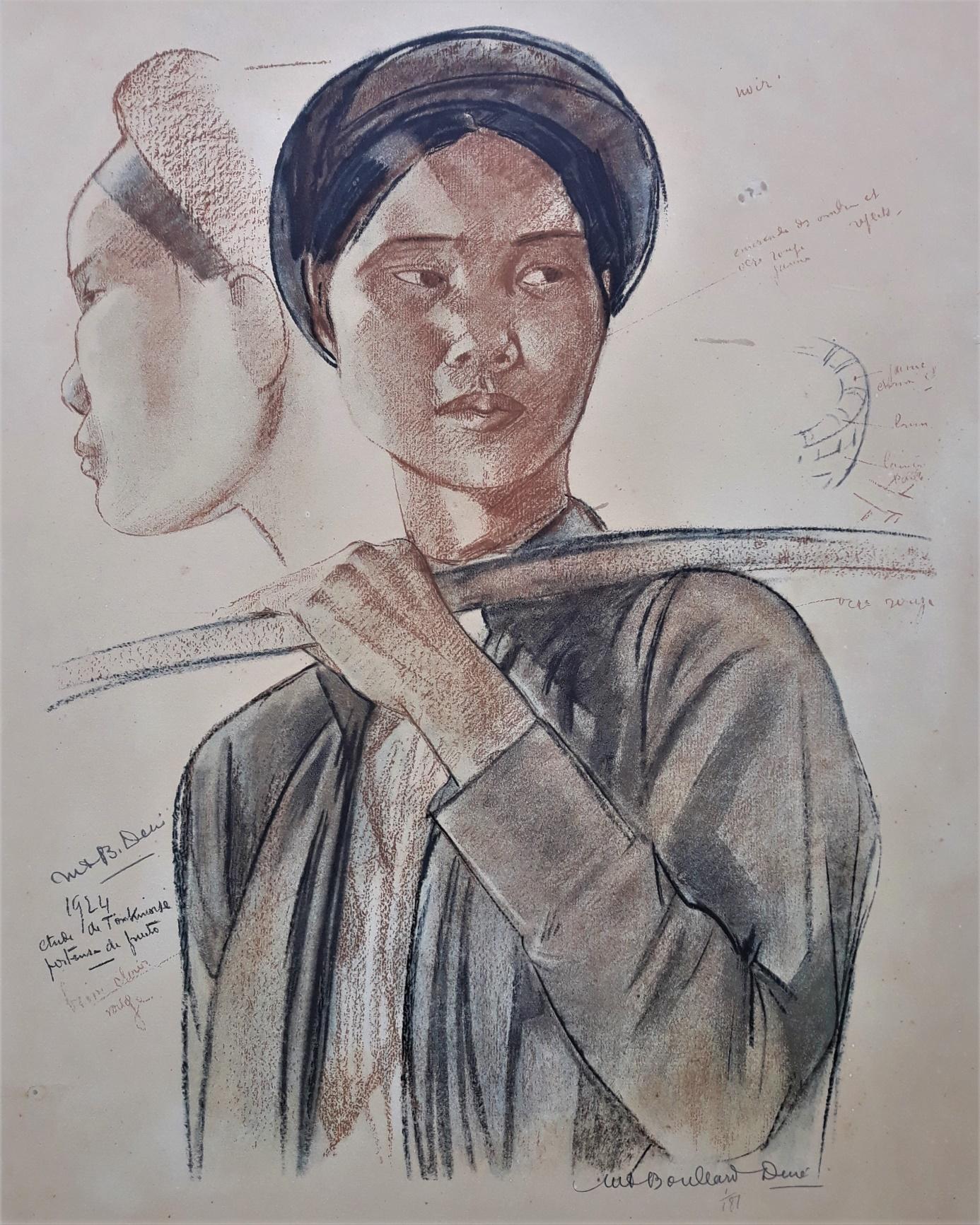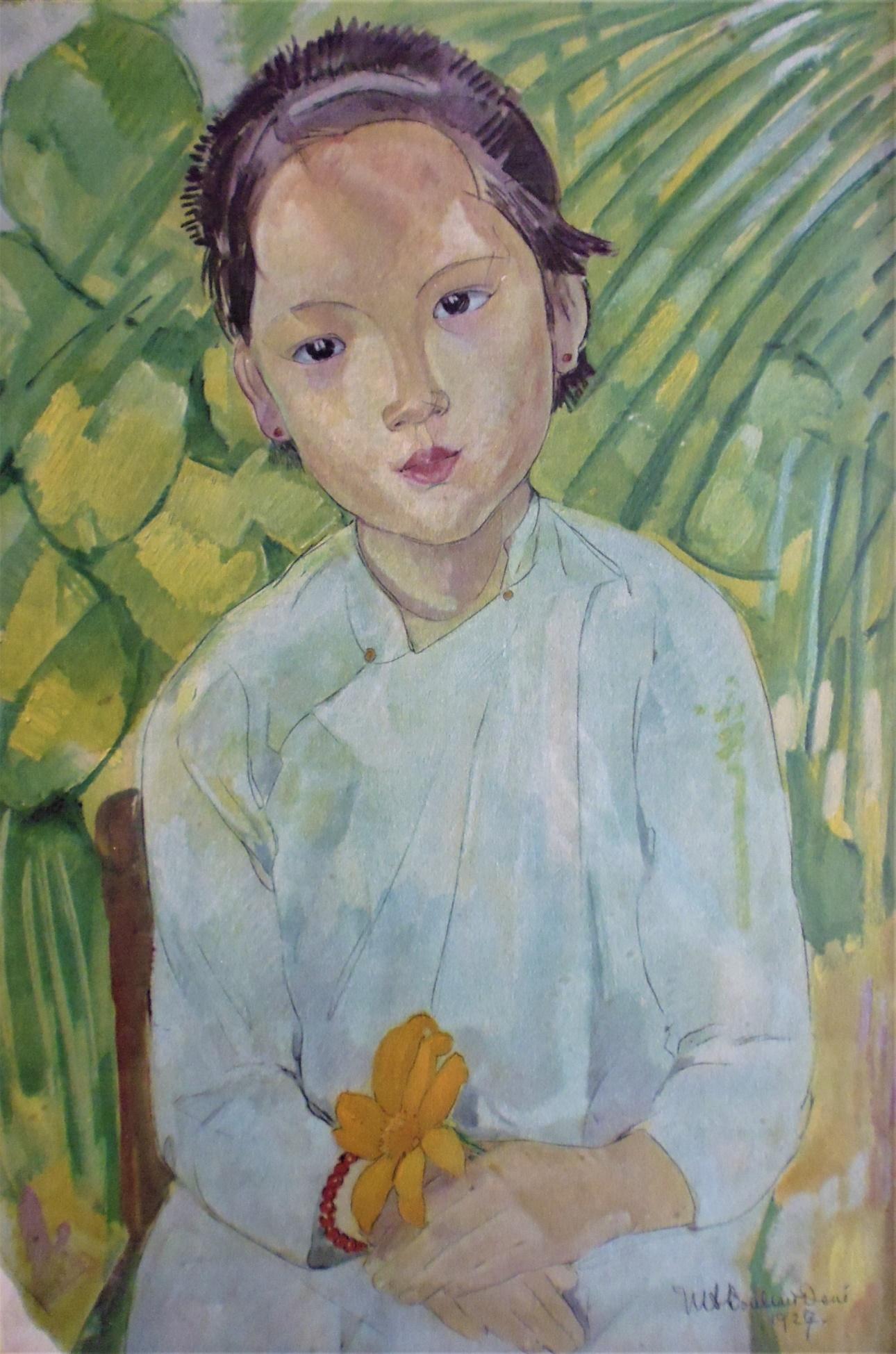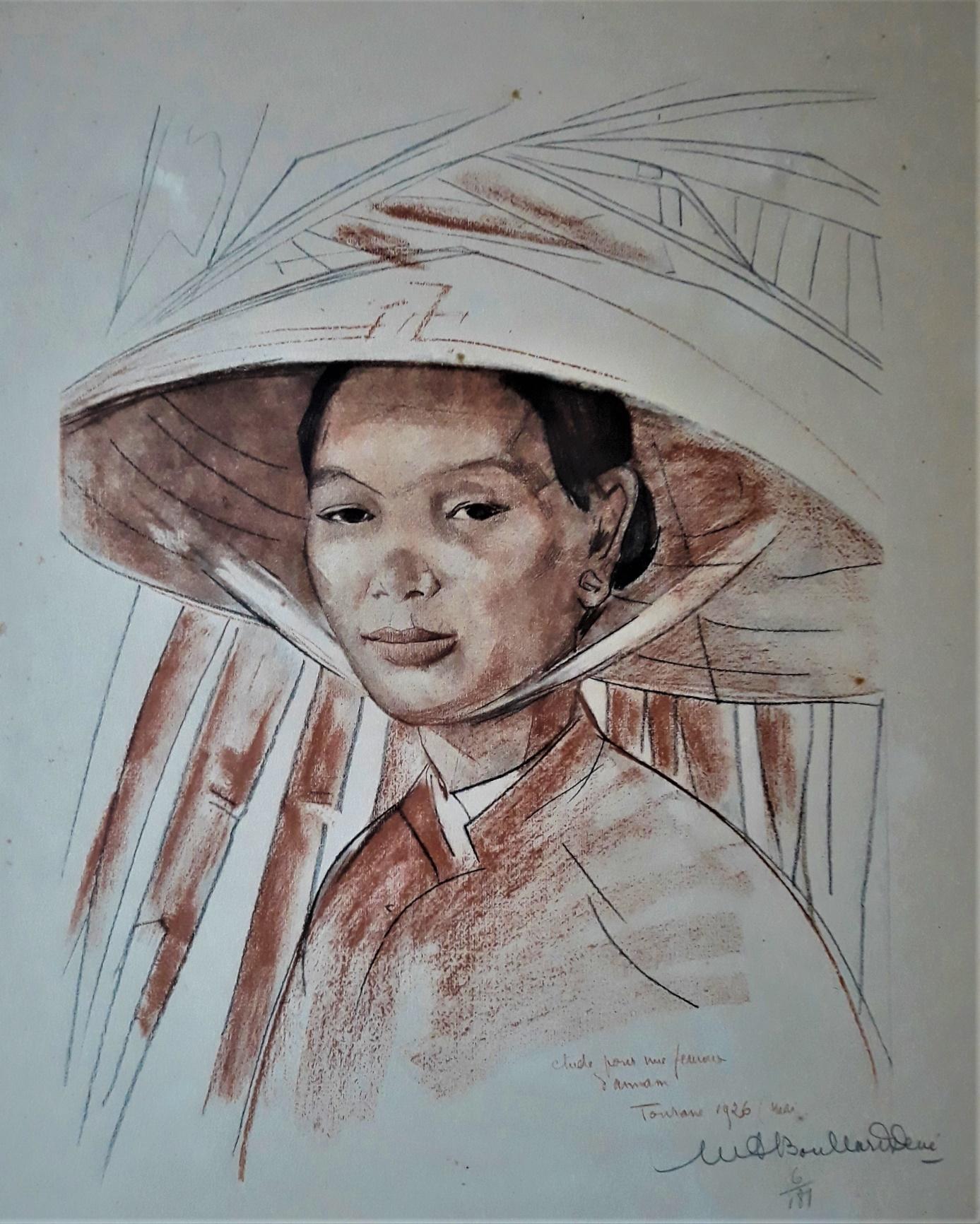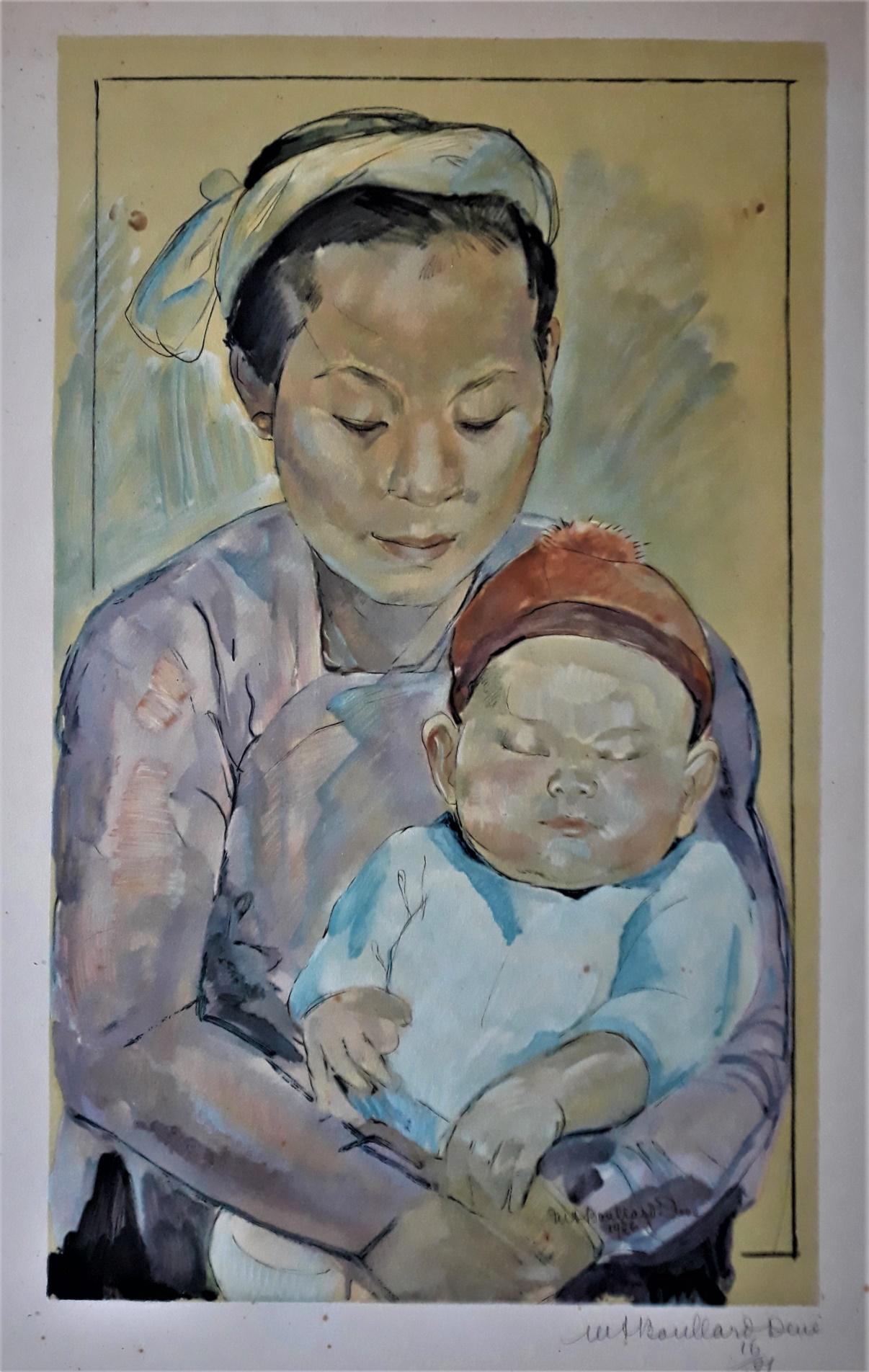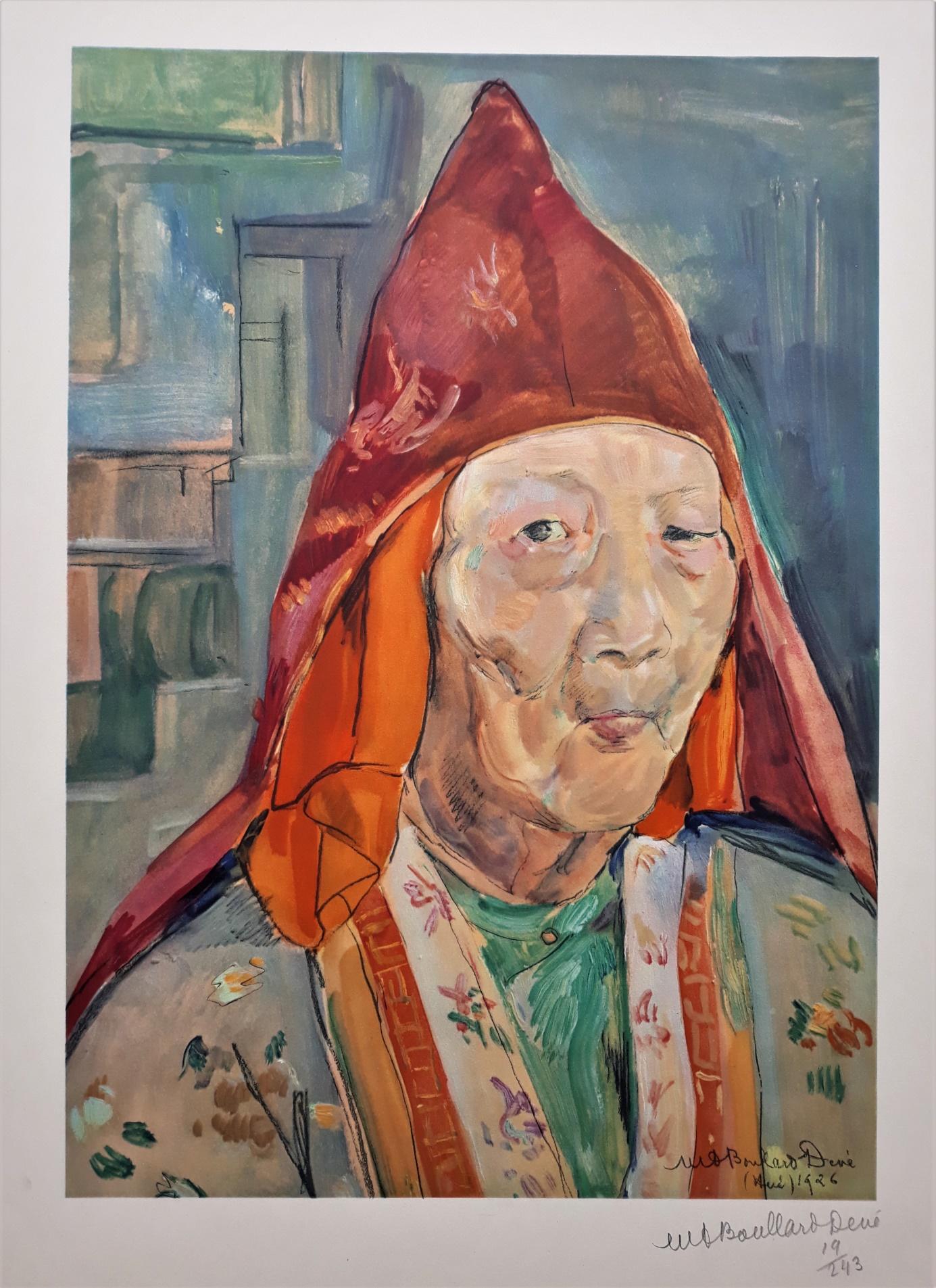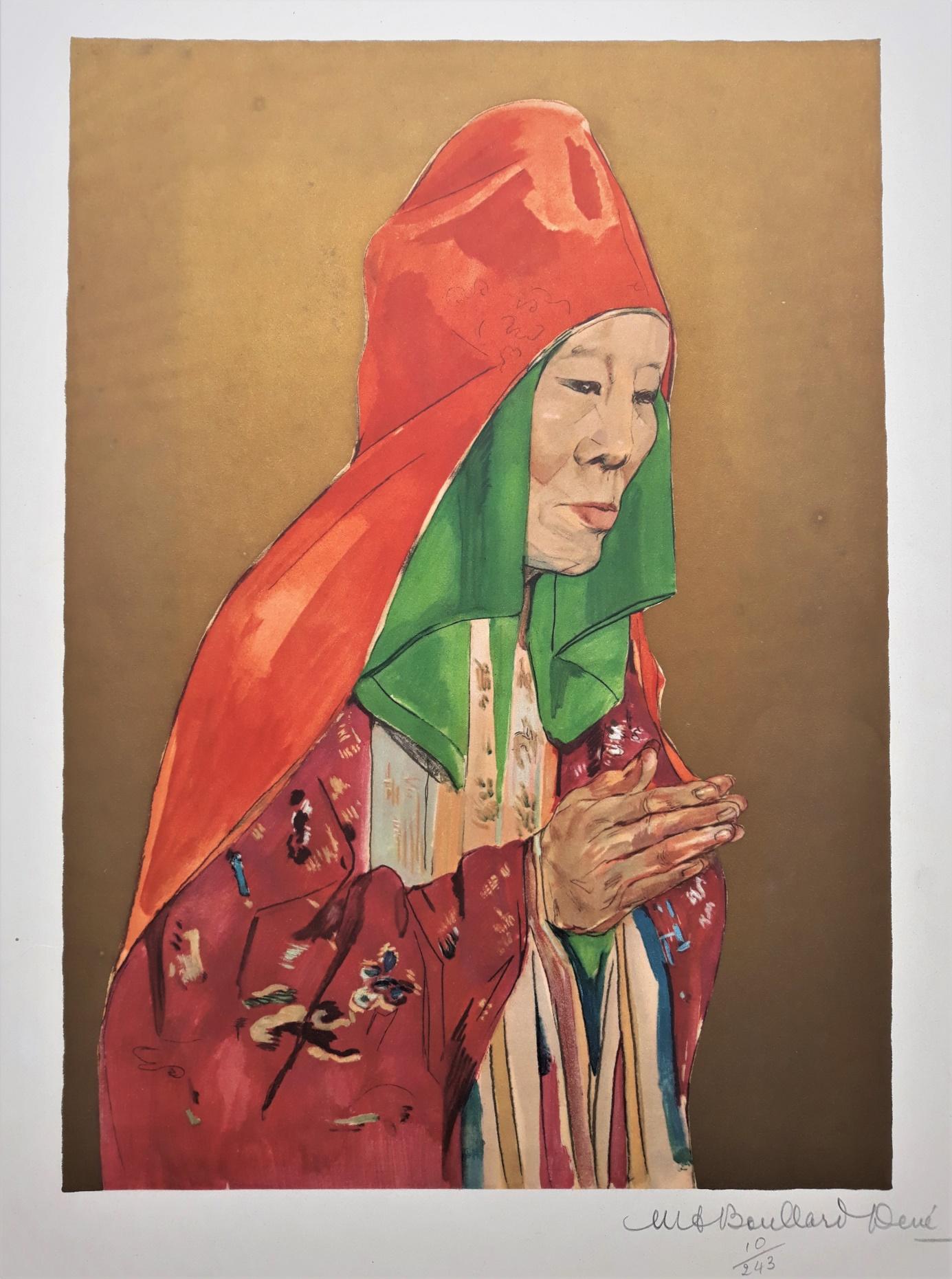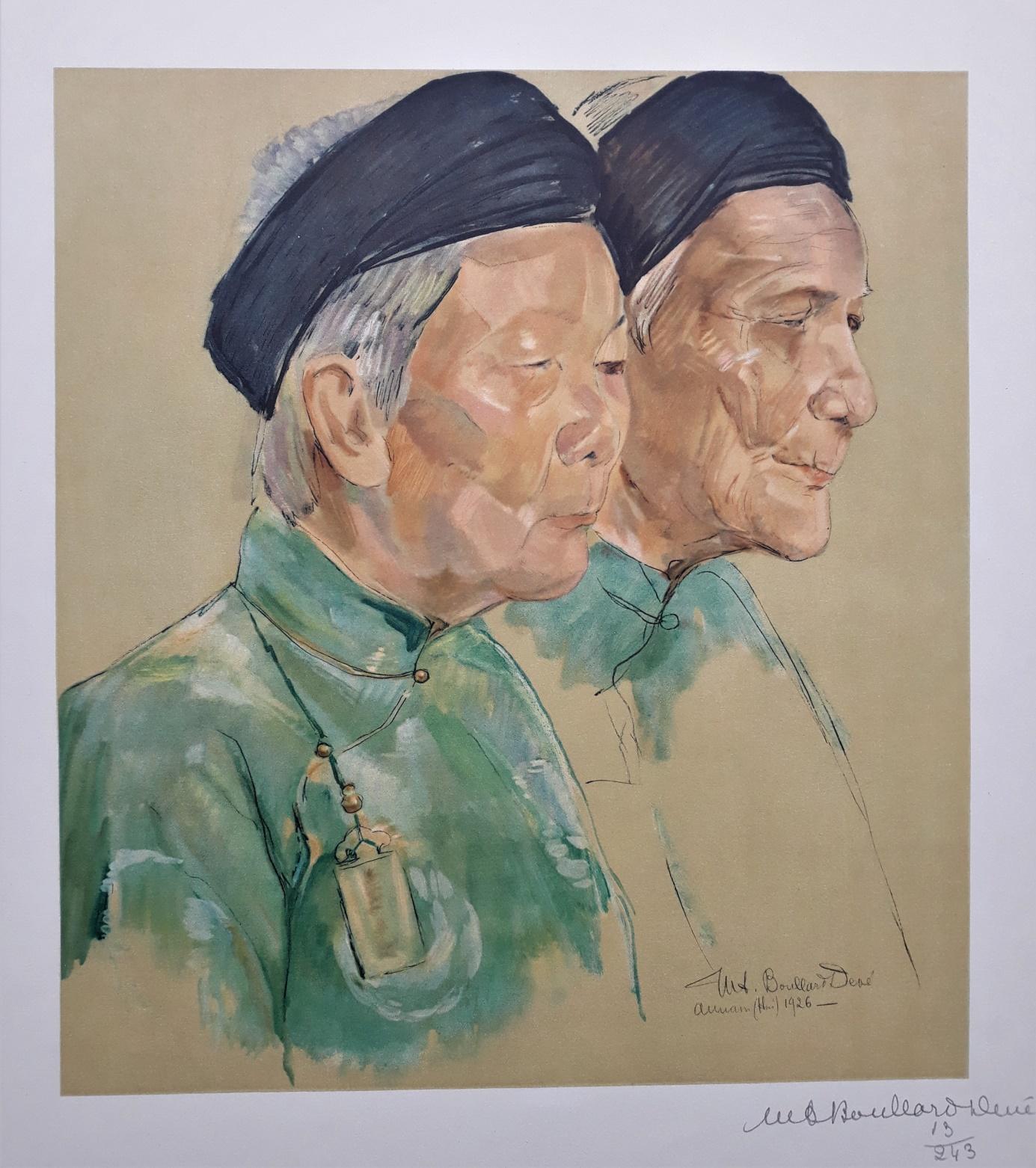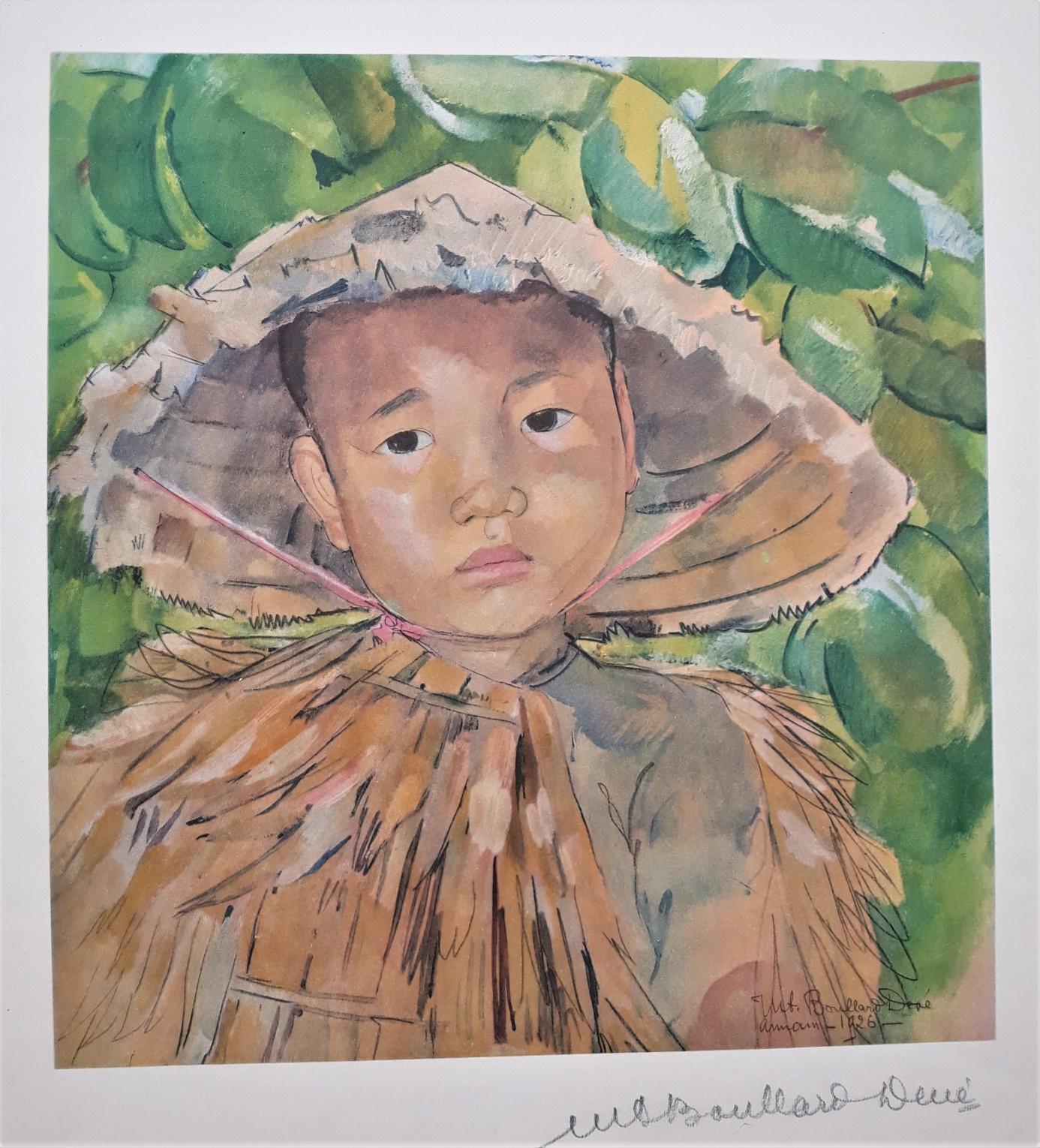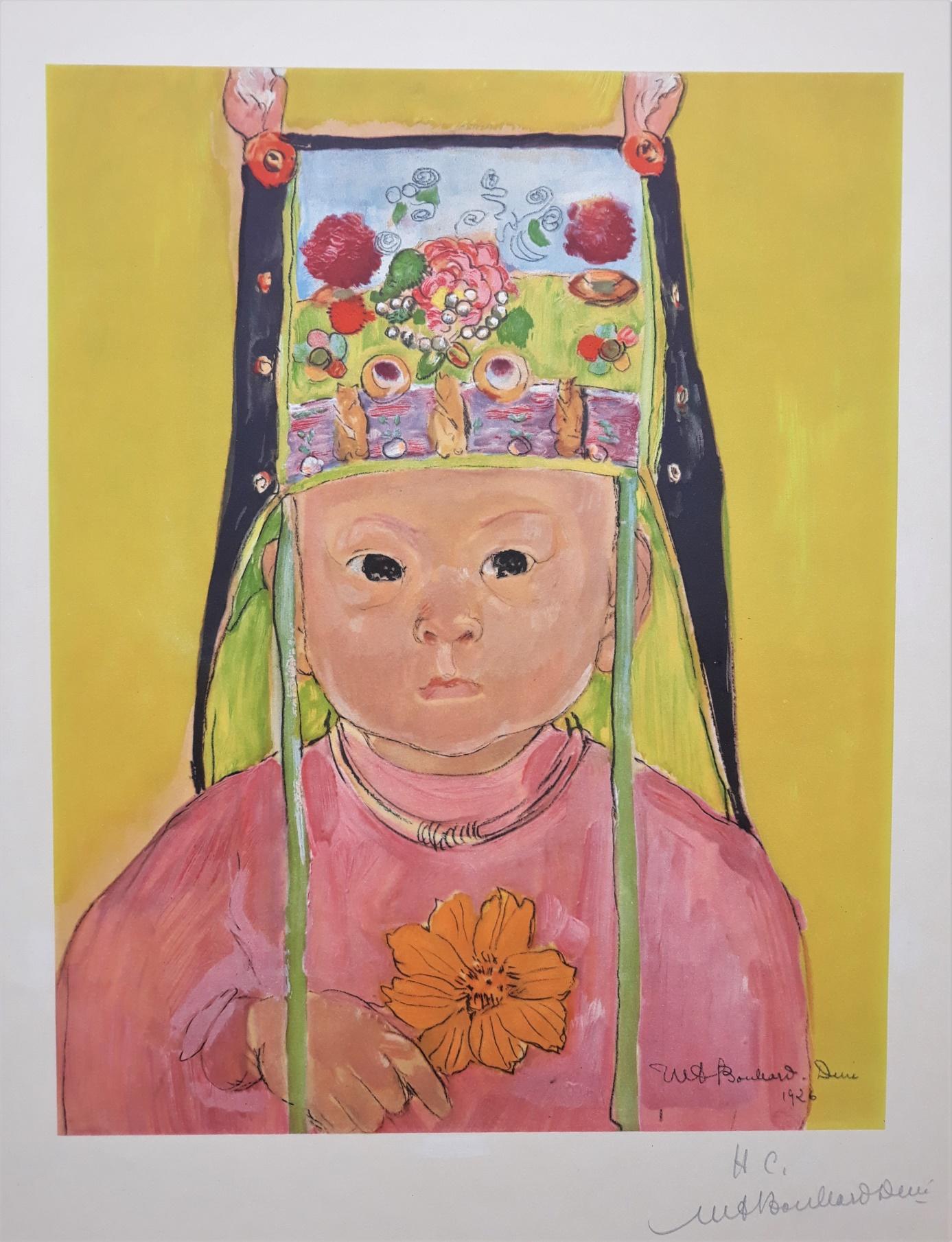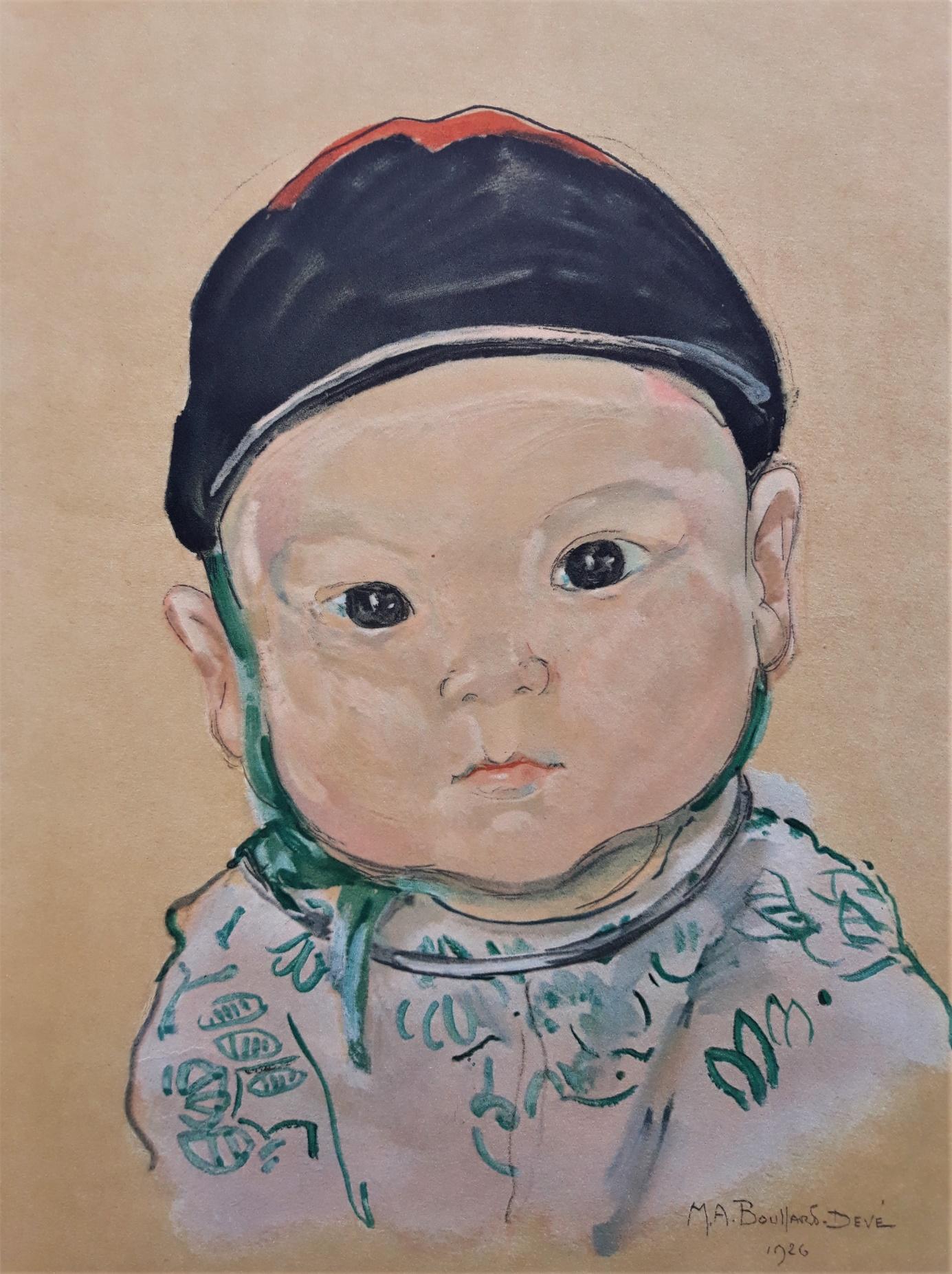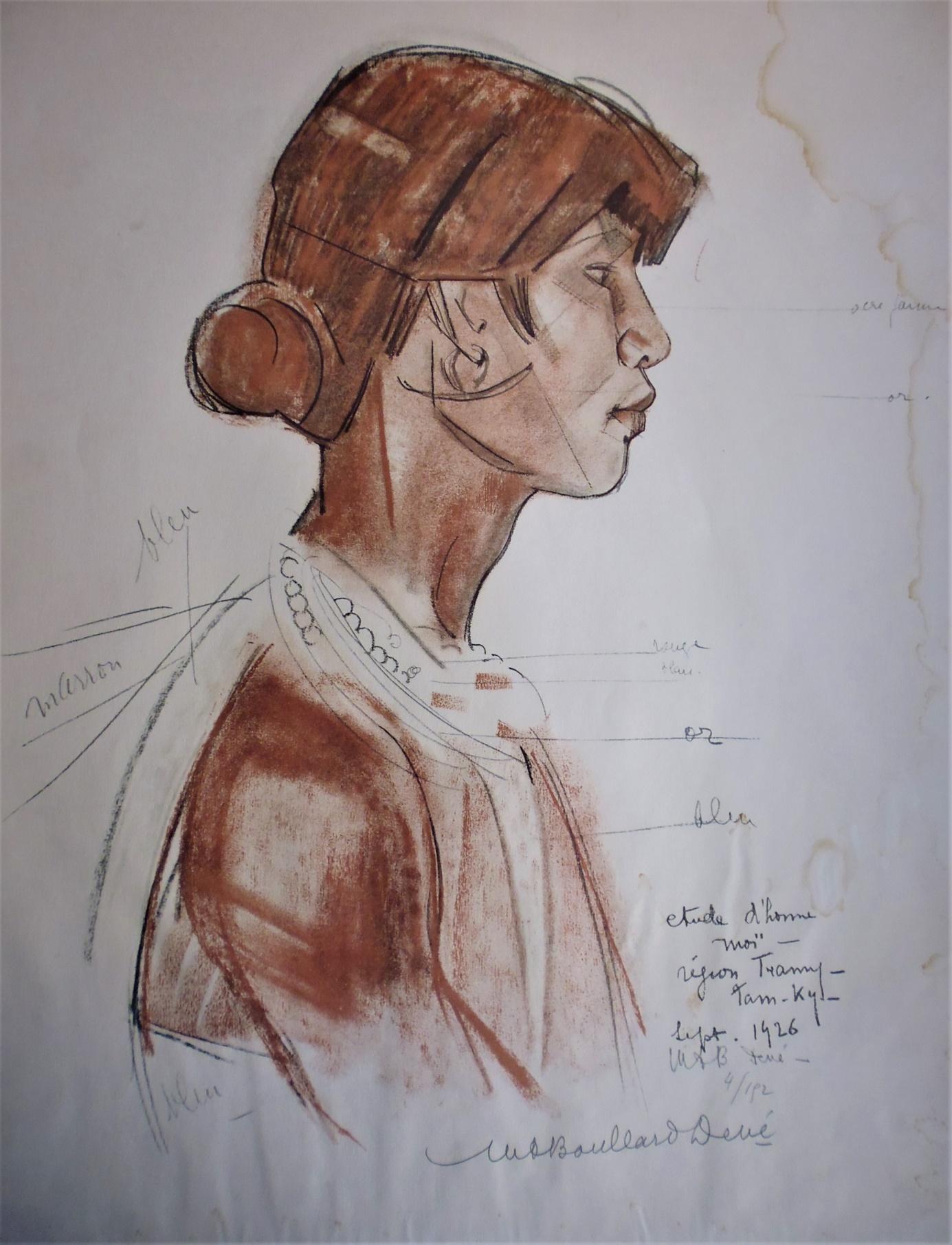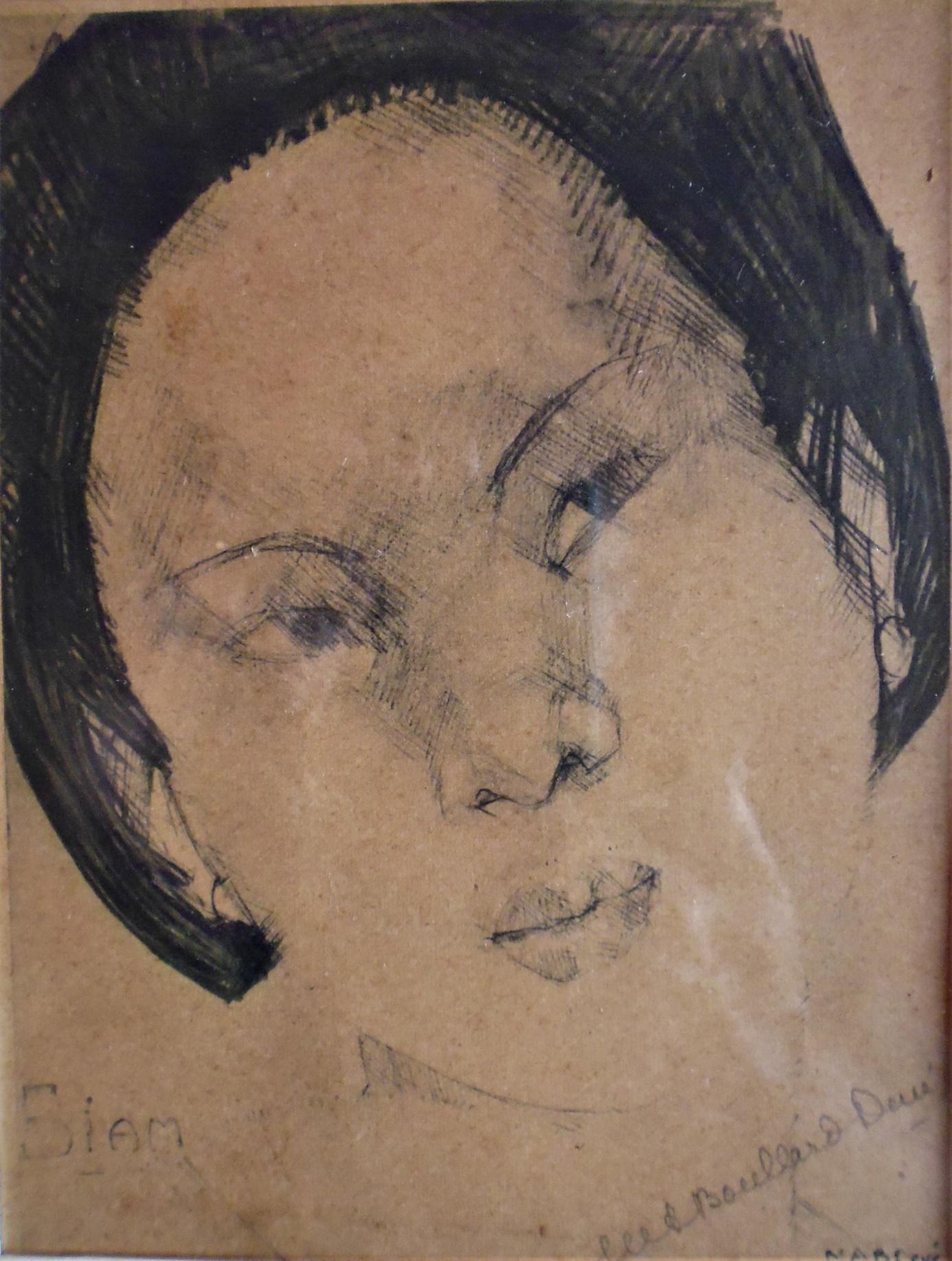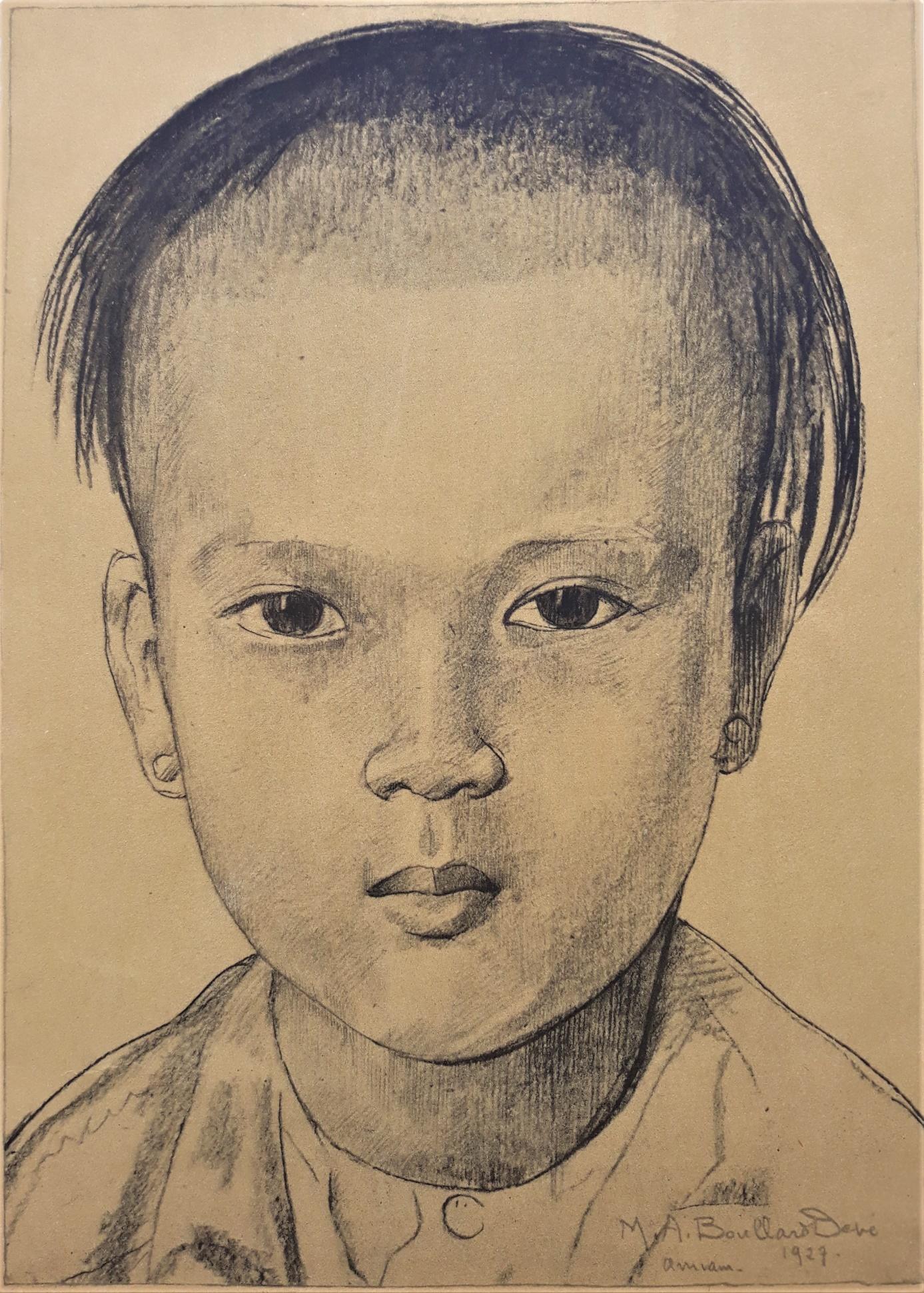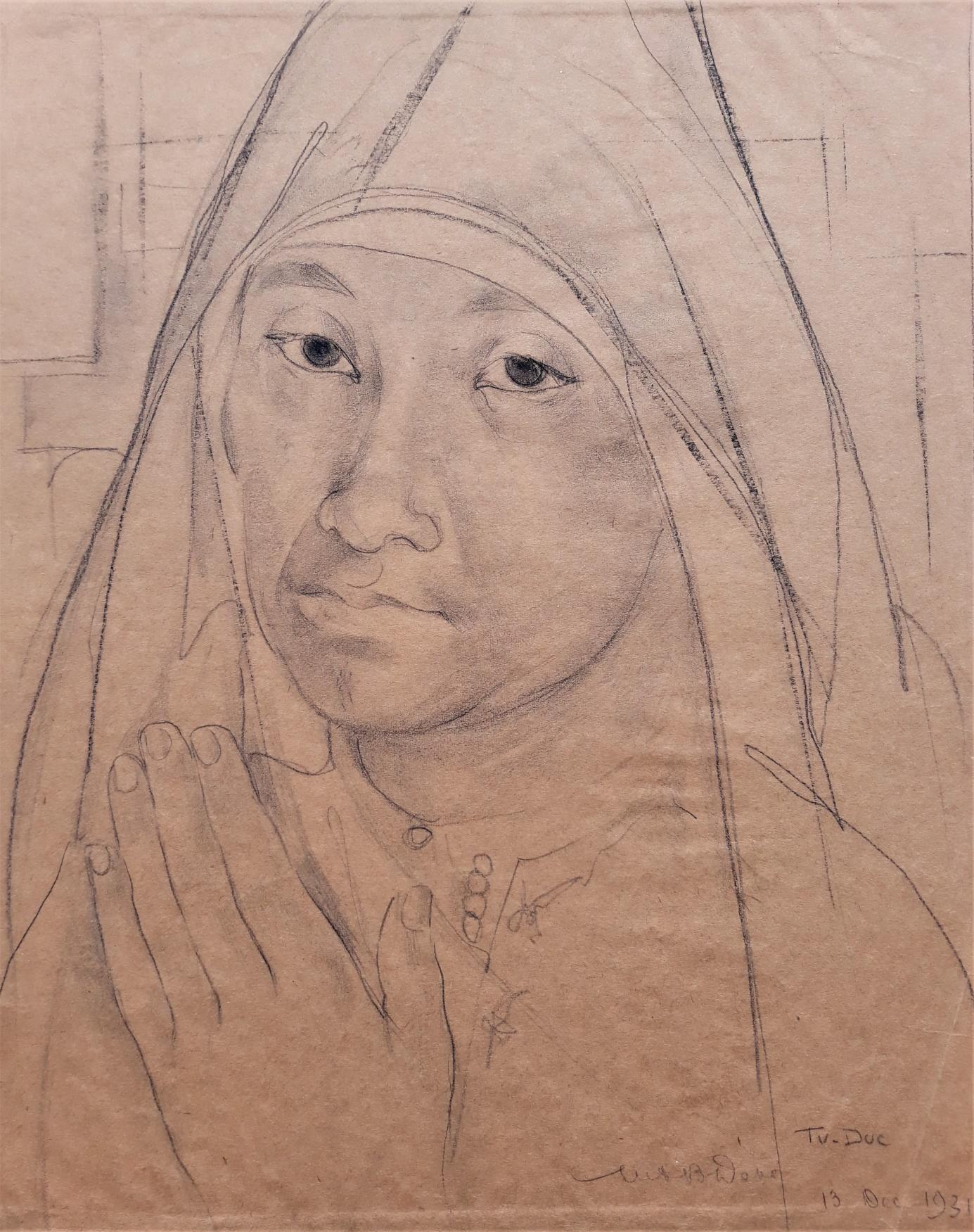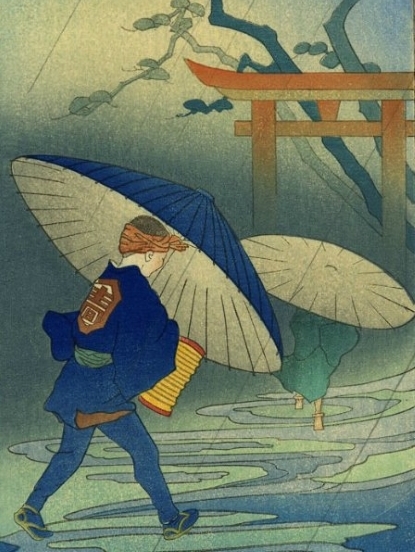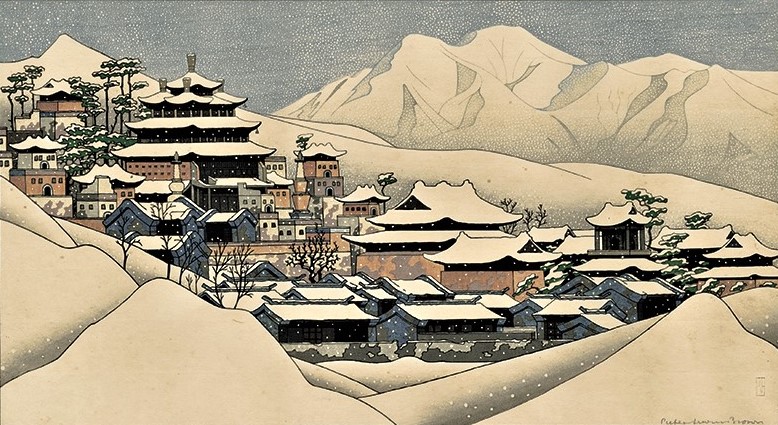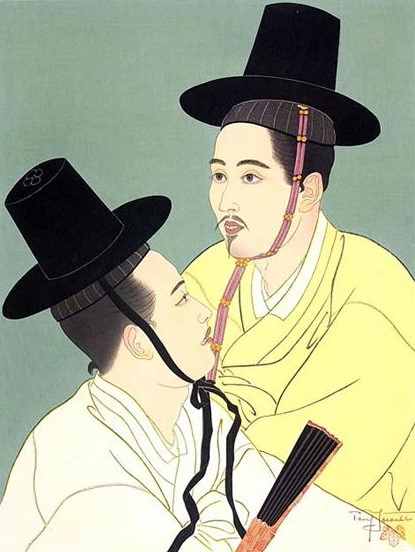MARIE-ANTOINETTE BOULLARD-DEVÉ (1887-1966)
Marie-Antoinette Boullard was born in Paris in 1887 and studied at the Beaux-Arts from 1908. There she met her first husband, the sculptor Pierre Fournier des Corats (1884-1953). In the early 1920s, she moved to Indochina and had the opportunity to travel through Annam, Laos, Siam, Cambodia and in particular the temples of Angkor. During this decade, she created works, sometimes marked by borrowings from the work of Gauguin, which made her known locally and in France. In 1926, she joined forces with Marc Chadourne to publish a magnificent work, Vision de l'Indochine, in which she delivered 20 plates of portraits of Indochinese men, women and children whose ethnographic character and intense humanity likens her to Alexandre Iacovleff.
But the exceptional character of her talent burst forth during the decoration she made for the Indochinese Pavilion of the International Colonial Exhibition in Paris in 1931. It is a frieze 40 meters long which represents the different populations of the territories from Southeast Asia. This unique work unfortunately had to be split up and had joined the Musée des Colonies de la Porte Dorée in Paris. It is now preserved at the Musée du Quai Branly. After the war, retired to Tangier where her son lived, she continued to paint colours and lights of North Africa and Spain and died in 1966.
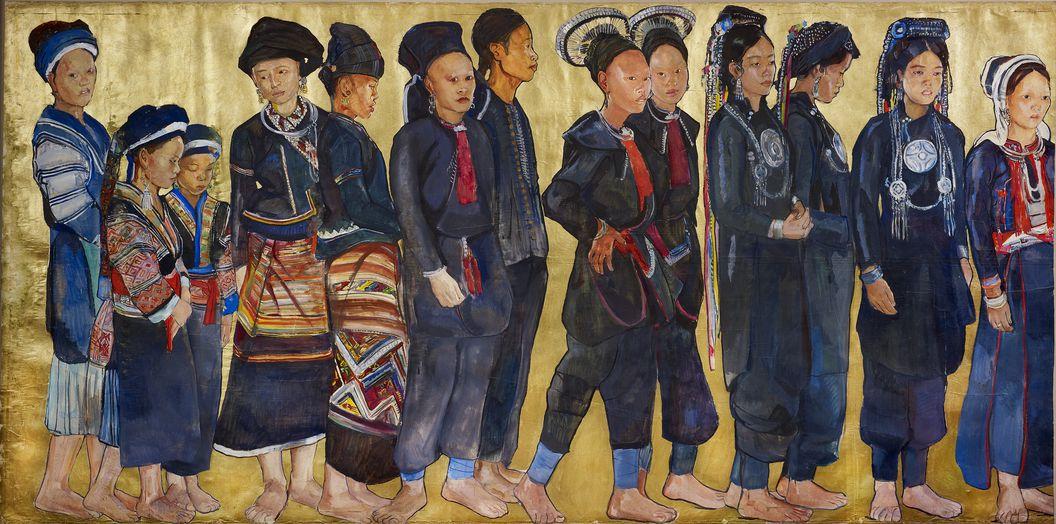
Bibliography and recent exhibitions in France :
- Vision de l’Indochine, de Marc Chadourne, études, pastels et gouaches de Mme A. Boullard-Devé, Plon, Paris, 1926
- Du fleuve rouge au Mékong, Musée Cernushi, Paris, septembre 2012-janvier 2013 (catalogue)
- Peintures des lointains, collections du Musée du Quai Branly, Paris, janvier 2018-février 2019 (catalogue)
The collection
